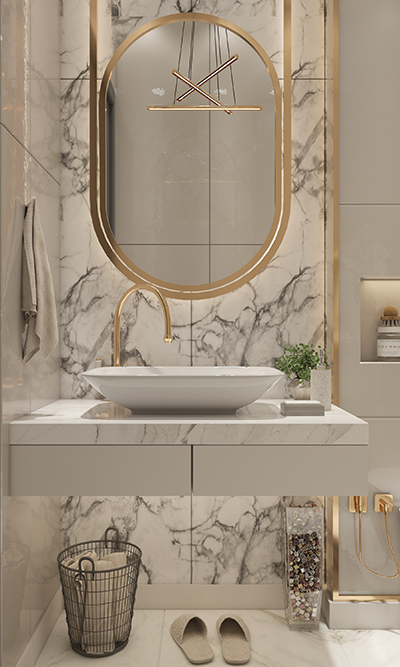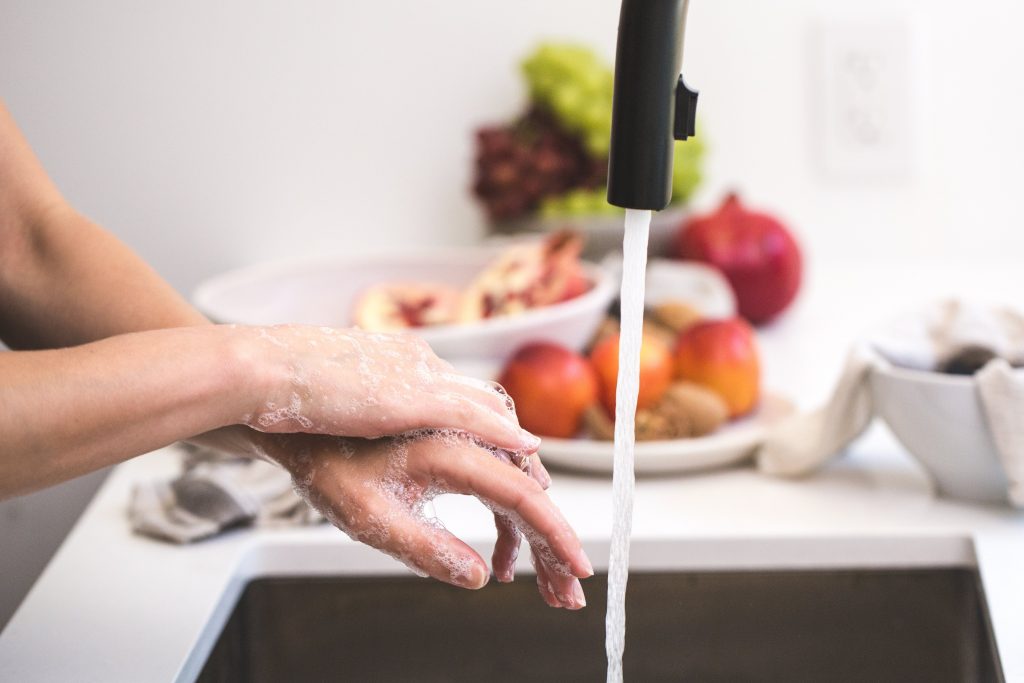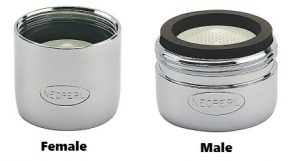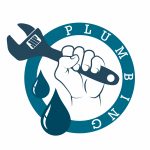Category: water conservation
Water conservation allows for lower water and water heating costs. Water conservation can be accomplished through the use of inexpensive water saving devices and tools.
Conservation Kits Provide Instant Savings
Posted on by Yaminah Jappah
As the climate crisis on our planet has become a climate emergency, a lot of us are looking for different ways to improve our carbon footprint. While this may initially seem like a daunting and expensive task, it truly isn’t. There are many small ways to start saving both energy and water around your home or building that won’t break the bank. Conservation kits are prepared with these types of savings in mind, and the items they contain provide instant savings once installed.
Improving Energy Efficiency
According to Time.com, “On average, remote workers have seen a $40-50 monthly increase in their energy costs—or as much as $600 a year.” With energy bills steadily on the rise, employing measures that can produce savings right away is even more pressing. Common items you’ll find in conservation kits include:
- LED Light Bulbs, which use up to 80% less energy than their incandescent counterparts
- Closed Cell Foam to limit drafts and heat from entering through doors
- Outlet Gaskets that block air leaks from outlets
- Rope caulk to seal air from entering through windows

Help Me Save Water
Each day, the average home in the United States uses approximately 80-100 gallons of water at home. A surprising number, right? When you consider the amount of times we wash our hands and dishes, flush the toilets, and even shower, this number really begins to take shape. Let’s take a step back, and see how we can bring this number down.
- Low flow aerators reduce the amount (but not the pressure) of water coming from faucets. Their flow rates range from 0.5-2.0 gallons of water per minute.
- Low flow shower heads follow this same concept, except with the shower. Many of these shower heads are also self-cleaning.
- A toilet tank bank is placed in the toilet tank to limit the amount of water used per flush.
- Outdoor water savers allow you to expand water savings outside of the home and into your gardens.
Saving energy and water at home, or in your building, can actually be quite simple. With a few quick installations of items found in conservation kits you can be well on your way to helping the climate and your wallet at the same time.Posted in Air Sealing, energy efficiency, Energy Saving Devices, led lights, low flow showerheads, reducing drafts, saving energy, saving water, Uncategorized, water conservation, Water Saving Devices, weatherization, weatherproofing, weatherstripping, windows weatherproofingLeave a comment
Using A Green Loan for Home Efficiency
Posted on by Yaminah Jappah

“Creating a green home is a great way to reduce your carbon footprint right where you live, while at the same time placing money right back into your pocket.”
Our homes are responsible for approximately 20 percent of all greenhouse gas emissions in the US. While some may want to add energy saving upgrades, many have held back because of the costs. Adding energy and water efficiency products to your home or building just got a little bit easier. Using a green loan, you can easily get started on completing those projects that will increase the overall efficiency and savings in your space.
How does a green loan work?
This type of loan can be used to complete major renovations, such as installing tankless water heaters, solar panels and energy efficient doors and windows. Additionally, the funds can also be used to make faster green improvements, including:
- Low-flow showerheads
- Low-flow aerators
- Eco toilets
- LED lights
- Adding or updating insulation
- Programmable thermostats
When searching for products that meet energy and water efficiency requirements, look for the Energy Star and WaterSense labels.
How much can I save?
The products installed and projects completed with a green loan can certainly help lower your utility bills. At the highest level, LEED-certified homes can save an average of 15% on the cost of energy annually. Taking into account that the average family in the United States spends between $2,000-$3,100 on energy and water bills every year, that can equal savings of roughly $300-$465.
Creating a green home is a great way to reduce your carbon footprint right where you live, while at the same time placing money right back into your pocket. Check with your local bank or credit union to find out more information on getting started with one of these loans.Posted in energy efficiency, saving energy, saving water, water conservation, weatherization Tagged energy efficient LEDs, Energy Star, green loan, green loans, WaterSenseLeave a comment
Install a Faucet Regulator for Simple and Immediate Savings
Posted on by Yaminah Jappah
On average, a newly installed faucet aerator is designed to use as much as 2.5 gallons of water each minute left running. While this may not sound like a whole lot initially, this can equal to thousands of gallons of water used and wasted by the end of the year. With wasted water comes wasted energy used to heat it, and rising costs for both. Installing a faucet regulator (also called an adapter) is a quick way to realize immediate savings on all three without losing pressure. Here are a few factors to consider when choosing the best one for you.
What kind of aerator does my faucet have?
Faucets are fitted with either male or female threading. A designated male aerator will have the threading on the outside of it. The standard thread size for a male aerator in the United States is 15/16”-27. The threading for a female aerator is placed on the inside of the aerator. Size is typically 55/64”-27. Once you know the type of aerator being adjusted, you can find the perfectly fitted faucet regulator. Additionally, adapters are available to convert the aerator from male to female, and vice versa.
Water Savings
Once you’ve looked over the kind of aerator to be retrofitted, the next subject to decide is the amount of water you’re hoping to save. As well as many threading options, a faucet regulator is available with many options for savings. The lowest amount of water that can be used through an adapter is 0.5 gallons per minute, and the largest flow rate is 2.2 gallons of water.
The regulators are designed with savings and pressure in mind to allow for the most savings without the loss of comfort. Simply twist in to your faucet or aerator, and you’re ready to start saving!

Posted in saving water, water conservation, Water Saving DevicesLeave a comment
How to Fit an Aerator into Your Faucet
Posted on by Yaminah Jappah
The average household faucet consumes over 2 gallons of water each minute it is left on. This may sound small, until you consider this can equal up to 3,000 gallons of wasted water each year. High efficiency aerators can help you save water and deliver a steady and forceful stream of water, while saving at the same time. A high-quality faucet aerator adapter helps you connect a water saving aerator to almost any common faucet styles. Here’s what you need to know before you get started.
Sizing It Up
Nickel and dime is the phrase to keep in mind here. Start by removing the washer and insert from the inside of the aerator. Grab a nickel, and place it over the aerator. If the size is close to that of a nickel, you have a regular size aerator. An aerator that a dime can fit in is a junior-size aerator.
Male and Female Threading
Determining the threading is slightly easier than discovering the size. A female threaded aerator will be screwed onto the faucet with the threads on the inside of the aerator. A male aerator has the threading placed on the outside, top of the aerator. Pretty simple, right?
Different Streams
Another thing to consider when choosing a faucet aerator adapter is the type of water stream it produces:
Spray stream resembles the pattern distributed by a shower head. This type is ideal for bathrooms in commercial spaces.
Aerated/Bubble stream works by mixing the water with air. This pattern is softer than the other options, and produces no splashing. This type is found commonly in residential environments.
Laminar stream is great for spaces that require high flow, and no splashing, such as health-care establishments.
The smallest of changes can get you on the road to having a major impact on water consumption in your community. Doing a task as simple as fitting a faucet aerator adapter over your faucets can save up to 3,000 gallons of water each year. This can be done without much effort, and without sacrificing any water pressure.

Posted in saving water, water conservation, Water Saving DevicesLeave a comment
Fix a Leak Week
Posted on by Yaminah Jappah
Household leaks can waste more than 1 trillion gallons of water annually nationwide due to indoor and outdoor leaks! WaterSense partners are encouraging Americans to become leak detectives during Fix a Leak Week, March 18-24, 2019, and save more than 10,000 gallons of water per home on average by taking three simple steps: check, twist, and replace:
1.Check your water meter before and after a two-hour period when no water is being used. If the meter changes at all, you probably have a leak. Check your sprinkler system for winter damage. Of the many types of water waste in the average home, toilet leaks are the most common, and often the most costly. Toilet leak detection tablets will help you detect silent leaks. Simply drop the dye tablet into the toilet tank and lightly stir it. After approximately 15 minutes have passed, check the bowl for color. If color appears, there is a toilet water leak. Dye tablets are non-toxic and FD&C safe. If you have a leak, you will most likely need to replace the flapper.
2.Twist faucet valves, tighten pipe connections, and secure your hose to the spigot. For additional savings, twist a WaterSense labeled aerator onto each bathroom faucet to save water without noticing a difference in flow.
3.Replace old and leaky plumbing fixtures with WaterSense labeled models, which are independently certified to use 20 percent less water and perform as well or better than standard models. You can also use a moisture meter and a hose faucet timer to prevent over watering.
For more information on Fix a Leak Week and to see if there are any events in your area, please visit the EPA’s website.Posted in water conservation, Water Saving Devices Tagged Fix a Leak Week, toilet leak detection1 Comment
Choosing the Right Faucet Aerator
Posted on by Yaminah Jappah
Choosing the right bathroom or kitchen aerator is one of the easiest steps you can take to save water. However, selecting the right aerator can be challenging because there are so many different flow rates and sizes to consider. A bath aerator typically screws into the faucet spout so it needs to be the correct size and threading. We’ve listed four factors to consider to help your narrow down the aerator that will meet your needs.
Threading
This is probably the most important factor to consider since it will determine if the aerator will fit your faucet spout. The threading will depend upon which country you are in. The first thing to determine is if you need female or male threading. A female aerator has the threads on the inside of the aerator, while a male aerator has threads on the outside of the aerator. In the United States, the thread size are 55/64″-27 for standard-sized female and 15/16″-27 for standard-sized male. A dual thread aerator is very flexible in that it allows you to fit into both male and female threaded sprouts since it has threads on both the inside and outside.

Flow Rate
A low flow aerator helps you realize water savings by restricting the water flow rate. To be classified as a low flow aerator and have industry certifications such as WaterSense labeled or CalGreen compliant, it should have a flow rate of less than 2.0 gallons per minute (gpm). The technology has improved significantly to compensate for fluctuations in pressure, so that a low flow aerator does not feel like it’s not delivering sufficient water. To seriously cut down on water usage, consider a flow rate of between 0.5 gpm to 1.5 gpm.
Stream/Spray Type
A low flow bubble faucet aerator restricts the water flow from the faucet. This type of aerator adds air to the water flow to enhance the water stream to give the sensation of a larger flow even though it’s dispensing less water. It is ideal for use in both bathroom and kitchens. A bubble faucet aerator typically has a cross mesh screen to act as a flow restrictor and aerate the water. A needle spray aerator produces a shower like pattern when dispensing water. Needle spray aerators are the only choice when you are selecting an ultra low flow faucet aerator e.g. 0.5 gallons per minute (gpm) or lower. Needle spray aerators provide a good coverage of water when washing hands and so are often preferred in commercial applications. They have tiny holes around the base of the aerator through which the water is dispensed. A Laminar Stream delivers a non aerator stream. It is typical found is hospitals/health care facilities where a strong non splashing stream is desired.

Size
Aerators come in 3 different sizes : regular size, junior or small size and tom thumb size. The regular size is the largest and the housing is the size of a quarter, the junior/small size is the size of a nickel, and the tom thumb is equivalent circumference of a penny.
Keep these factors in mind and you’ll spend less time worrying about returning those wrong aerator, and more time enjoying the extra money you’ll be saving on water savings with a low flow aerator.Posted in water conservation Tagged female aerator, male aerator, tom thumb1 Comment
EPA’s WaterSense Program Creates Big Savings
Posted on by Conservation Mart

The U.S. Environmental Protection Agency’s WaterSense program, works to protect the future of our nation’s water supply by offering people simple ways to use less water.
By promoting the value of water efficiency, providing consumers with easy ways to save water, and encouraging innovation in manufacturing, WaterSense has helped consumers save a total of 1.5 trillion gallons of water and more than $32.6 billion in water and energy bills! By the end of 2015, reductions of 212 billion kilowatt-hours of electricity and 78 million metric tons of carbon dioxide were achieved through the use of WaterSense labeled products.
Using WaterSense labeled faucets or faucet accessories could reduce a household’s faucet water use by more than 500 gallons annually—that’s enough water to do 14 loads of laundry.
Even if only 1 in every 10 homes in the United States installed WaterSense labeled faucets or faucet accessories in their bathrooms, it could save 6 billion gallons of water, and more than $50 million in the energy costs to supply, heat, and treat that water.
One of our best sellers is the Neoperl Perlator Regular Dual Thread 1.5 GPM Aerator. Whether your looking to change to a water saving flow or just replace a existing faucet housing, you will enjoy the benefits of NEOPERL’s patented anti-liming construction. Using a 1.5 gallons per minute aerator will save you up to 30% water (in comparison to a 2.2 gpm). Energy savings can also add up by heating less water.
WaterSense labeled toilets use 20 percent less water per flush but perform as well as or better than today’s standard toilets. We recommend the Niagara Stealth Dual Flush Elongated Toilet Bowl. The Stealth technology has truly changed the market in that it features a low-profile body, ultra quiet flush, and patented hydraulic technology. The low friction, smooth ceramic surface of the toilet bowl allows for clearing with every flush. By providing two flush options, they reduce water consumption and costs like no other models out there! Check this link for available rebates.
Water is crucial for the survival of the earth and all its’ inhabitants, but there is a limited in supply. The Earth might seem like it has abundant water, but in fact less than 1 percent is available for human use. We all need to do our part to limit our household water usage, and upgrading to WaterSense devices in your home is a great place to start.Posted in Uncategorized, water conservation, Water Saving Devices Tagged WaterSenseLeave a comment
Retrofit Your Toilet
Posted on by Conservation Mart
In the average American home, 45% of the total water usage occurs in the bathroom, with about 27% of that being used by toilets. Fortunately, your household can decrease its toilet water usage by checking and fixing leaks and retrofitting toilets.
In 1994, The Energy Policy Act became a law and mandated a maximum flush volume of 1.6 gallons for toilets manufactured and installed after this date. If your toilet is more than 23 years old, chances are that it is using between 3.5 – 7 gallons of water with every flush.
Over the last twenty years, there have continued to be efforts to decrease the amount of water used in toilets. There are high-efficiency toilets that use 1.28 gallons per flush or less. You may also be familiar with dual flush, grey water, or composting toilets.
However, if you are not ready to install new toilets, you can retrofit the ones you have. An easy option is to install a toilet tank displacement bag in your toilet tank. Once filled with water, the bag will displace about .5 gallons of water in your toilet tank so that it will use less water each time it is flushed.
Another option is to install a fill cycle diverter. The fill cycle diverter is a plastic device that directs more water to the tank and less to the bowl while they refill so that they finish filling at roughly the same time. When a toilet is flushed, both the tank and the bowl need to be refilled, and in many cases the bowl will fill sooner than the tank. In this case, the water will continue to run into the bowl until the tank water level is high enough to shut off the fill valve. Once installed, a fill cycle diverter will save about .5 gallons of water with each toilet flush. It can be used in conjunction with the Toilet Tank Bank.
A third option is to install a new toilet fill valve. The Hydroclean toilet fill valve is the only valve that solves the two biggest reasons for water loss in toilets – miscalibration and leaks. The patented mini-valve allows pinpoint calibration typically saving 30-ounces of water per flush in high efficiency toilets and 60-ounces per flush in older, larger toilets. Its’ unique bowl filler adjustment also detects silent leaks and the patented Float Lock allows minor repairs in the tank as well as flapper leak detection without shutting off the water.
Simple, inexpensive retrofits for your toilets will allow you to save both water and money!Posted in saving water, water conservation Tagged fill cycle diverter, fill valve, toilet retrofits, toilet tankLeave a comment
Outdoor Water Conservation Tips
Posted on by Conservation Mart
This time of year, homeowners usually start to see their water bills increase as they tend to their spring plantings. However, by working with current rainfall levels and implementing water saving devices, homeowners will see immediate savings on their water bills.
The rain gauge and soil moisture meter monitor rainfall and absorption rates so that you don’t over water your plants. The rain gauge simply measures rainfall and the soil moisture meter shows you how much of the moisture is retained in the soil. Using these tools together prevents over watering of plants to promote healthy gardens and lawns and eliminate water waste.
Once you have determined that your plantings need water, these two devices will help you deliver water in the most efficient way possible. The Water Miser 7-Position Spray Nozzle has seven precision spray patters: mist, soaker, shower, jet, cone, flat and center so that you are not applying more water than you need in any given situation.
The hose timer works just like an egg timer. You just twist the dial to the desired watering duration from 15 minutes up to 120 minutes and the timer will turn itself off. The mechanical operation requires no batteries and makes this one of the easiest and quickest timers to use. It has a large dial with both timed watering and manual watering options.
Whether you use a spray nozzle or hose timer, the best time to water is in early morning or early evening to avoid evaporation.
For a small investment in these outdoor water conservation devices, you can decrease your water bill and save thousand of gallons of water per year.Posted in water conservation Tagged outdoor water conservationLeave a comment
The Top 5 Ways to Conserve Water at Home
Posted on by Conservation Mart
In honor of Groundwater Awareness Week (March 6-12), and World Water Day (March 22), we are highlighting some of our top-selling water conservation products.
The Niagara 1.25 gpm Earth Massage Chrome Showerhead is a non-aerating, low flow showerhead which offers 9-jet turbo massaging sprays. 1.25 gpm low flow means you will save up to 5,475 gallons of water per year! That’s approximately $107 in electric and $68 in gas water heating!
The toilet is the largest consumer of water in the bathroom. Installing the water saving Toilet Tank Bank is a quick and cost-effective way to save water at this source. This displacement bag saves about 0.8 gallons of water per flush when installed.
If every household in the United States installed low flow faucet aerators, we could save over 60 billion gallons of water annually. They are cost-efficient, simple to install tools that can pay for themselves in a matter of days with the savings on water bills.
The Niagara 1.0 GPM Dual Thread Bubble Bathroom Aerator uses only 1 gallon of water per minute, yet still produces a satisfying stream of water. The Niagara 1.5 gpm Brassdual Thread Coupling Swivel Kitchen Aerator allows you to aim the water wherever you want it in your sink and uses only 1.5 gallons of water per minute.
The Soil Moisture Meter is an outdoor water efficiency tool that allows you to monitor the levels of water in the soil. Over watering is the most common cause of plant death. Using this tool prevents over watering of plants to promote healthy gardens and lawns. The soil moisture meter helps to eliminate water waste.




